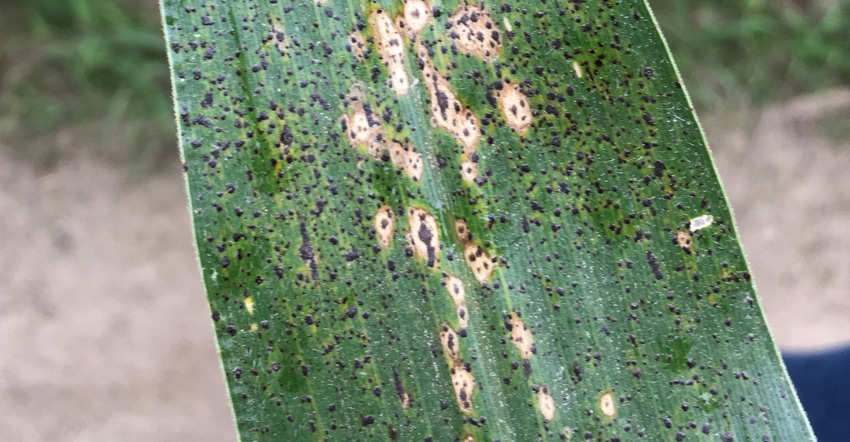March 6, 2019

By Martin Chilvers
Tar spot is a corn disease previously reported in Latin America. It was first found in the U.S. in 2015 in Indiana and Illinois. In 2016, the disease was first observed in Allegan County, Mich. By 2018, tar spot was reported across 26 Michigan counties causing areas of severe yield loss.
As the name suggests, tar spot looks and feels like black spots of tar, which cannot easily be rubbed off. Sometimes areas of dead leaf tissue develop around the flecks, which is referred to as the “fisheye” symptom.
In the U.S., the disease is caused by the fungal pathogen Phyllachora maydis. The black tarlike structures are fungal fruiting bodies, which release spores to infect new plants. The fungus grows through the leaf tissue and can rapidly shut down plants. The fungus needs corn to reproduce and does not infect soybean or wheat, nor does it need other diseases to infect corn.
The pathogen is not transmitted by seeds, but it can survive on corn residue. The disease is driven by moisture and in some instances irrigated fields have been hit especially hard, compared with nonirrigated fields.

In severely affected fields, lodging can be common, and yield loss can be as much as 50 bushels per acre. For every 1 percent increase in the amount of tar spot present in a field, there appears to be a yield loss of half a bushel per acre. Silage quality also can be affected with low moisture and a decrease in quality. However, there are no mycotoxins associated with this disease.
Variety resistance to tar spot is going to be the most important tool for disease management. No hybrids are completely resistant to the disease, and because the disease is so new, little information is available on hybrid performance. More screening of hybrids is desperately needed. Information on some initial screening results from the MSU corn performance trials is available online at https://varietytrials.msu.edu/corn/.
Few fungicides are currently labeled for use, although there are emergency exemptions for many. From preliminary research, it appears as though premix fungicides with two or more modes of action have better efficacy in suppressing the disease than single mode of action fungicides. The biggest question will be fungicide timing. Efforts are underway to develop a disease development model to optimize fungicide timing.
Mexico has hybrids that offer better resistance because it has been dealing with this disease longer. We hope to work with researchers at the International Maize and Wheat Improvement Center to develop hybrids with more resistance for use in the U.S. Until then, farmers are being advised to plant more than one hybrid to decrease their risk and choose those with a high stalk strength to help resist lodging.
Chilvers is an associate professor of field crop pathology at MSU’s department of Plant, Soil and Microbial Sciences. He can be reached at [email protected].
You May Also Like




